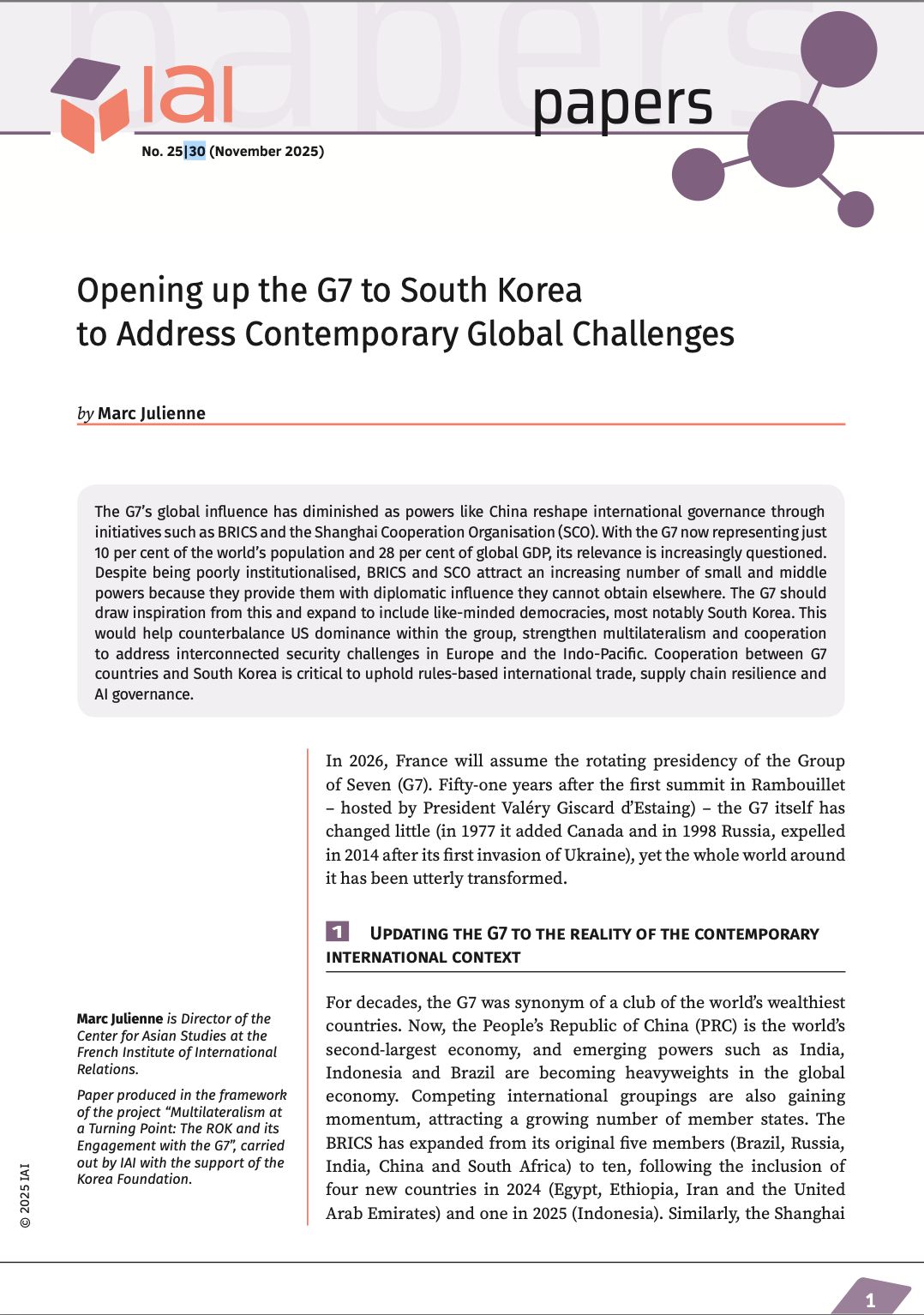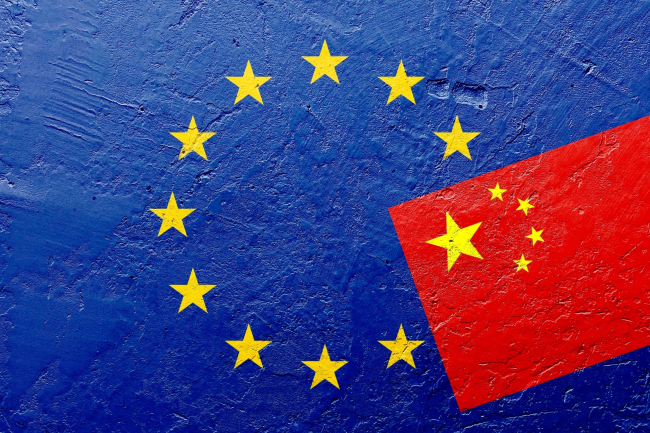Perspectives on European Neighbourhood Policy (ENP) after the Lisbon Treaty

Report written by Séverine Neervoort, Intern, Ifri Brussels.
The role of the European Union as an actor in its neighbourhoods is deepening and widening. At the same time, the European Neighbourhood Policy (ENP) is, itself fast approaching a juncture. Kerry Longhurst, Research Fellow at Ifri Paris, asks whether the EU will be able to keep a “balanced” approach in its neighbourhood policies and considers whether the southern and eastern neighbourhoods would or should remain within the same policy pot - which has been one of the defining characteristics of the ENP. This question has been addressed by countless think-tankers over the past year, the majority of which feel that the ENP will be split not least because of diverging national interests of member states, that might threaten to tear the policy in two. Kerry Longhurst’s view is that despite the recent emergence of two regional initiatives (Mediterranean Union and the Eastern Partnership), ENP will maintain its geographical integrity and remain together as a whole, at least in the short to medium term.
The Barcelona Process: Union of the MediterraneanOn the 20th of May, the Commission presented proposals defining the modalities of what will be called “Barcelona Process: Union for the Mediterranean”. These proposals, which build on Sarkozy’s more ambitious design, aim to bring greater vitality and visibility to the EU’s role in the southern neighbourhood, not least by speeding up the pace of reforms in the region. A primary objective is to ensure that the Mediterranean region becomes more pronounced, and ‘higher-up’ on the EU’s foreign policy agenda.
The content of the proposal aims to address what have been widely regarded as the weaknesses of previous efforts. The chief problems being the lack of regional integration: South-South trade, South-South political cooperation, South-South infrastructure projects etc., as well as the ever-widening economic divergence with the European Union. Nevertheless, the proposed Union for the Mediterranean sticks with the original objectives of the Barcelona Process: Political dialogue, economic cooperation and free trade, social and cultural dialogue, migration, social integration, and finally justice and security.
Kerry Longhurst described the proposed changes as a “restyling” of the Barcelona Process to include some new institutions. First, there will be biannual summits of heads of government, with the first one in Paris this July. Second, the new proposal aims to increase the reality of co-ownership of the project between the EU and the Mediterranean partner states. A new committee of specially appointed representatives from all partners and Member States is envisaged, which could be a tool to enable the EU to respond more quickly to a particularly urgent need or event. Enhancing the visibility and relevance of the Barcelona Process is a further core aim; to this end the proposal sets out the need to prioritise transnational infrastructure projects, to include transport and the environment (the details will be discussed in Paris in July). Finally, the proposal stresses that there would be no extra funding required: rather, it foresees the use of external sources of funding, from the private sector, international financial institutions or from EU regional programmes through regular procedures.
The speaker thinks we should reserve our ultimate judgement on the Barcelona Process: Union for the Mediterranean, until the Summit in Paris. But before this, we can highlight some potential strengths. Some of the ideas could have very positive outcomes, like the co-presidency or the Brussels based permanent committee of seconded experts. The project-focus of the initiative is also interesting, in Kerry Longhurst’s opinion. However, some problems can impinge upon the effectiveness of the Mediterranean Union. Conflicts in the region (Western Sahara and Israel-Palestine) are not really mentioned in the document, but they will present sizable obstacles. Then, there is the lack of commitment in the Mediterranean for region-building and south-south integration, which is a real barrier that the EU will have to negotiate. Furthermore, the region is far from homogeneous and uniform. The states on the southern shores of the Mediterranean have (and want) very different types of relations and with the European Union, consider for example the differences between Libya and Morocco.
The Polish-Swedish initiative for an Eastern Partnership
The eastern partnership idea outlines proposals to upgrade the EU’s relations with its eastern neighbours (Ukraine, Moldavia, Belarus, Armenia, Azerbaijan and Georgia). The proposal has a very pragmatic short to medium term perspective, which if it is adopted by the EU, will enhance the eastern dimension of the ENP. The Swedish-Polish proposal calls for a region-wide visa free regime and a deep free trade area. It also calls for a new generation of ENP actions plans, and wants reforms in partner states to be measured against EU standards more tightly. Moreover, it proposes that new and more ambitious contractual agreements should be offered to all eastern neighbours, depending on the pace of their reforms, based on Ukraine’s far reaching NEA, which is currently being finalised.
Whilst the EU has always taken a regional approach towards the South, this was never the case in the East – where the EU dealt with its neighbours on a bilateral basis. However, in the new Eastern partnership, ideas for regional integration and cooperation are proposed – which represents a potential innovation in EU policy.
AssessmentLike the Mediterranean Union, the authors of the Eastern Partnership idea argue that there will be no impact on the EU budget. Similarly, the two initiatives say they serve the European Neighbourhood Policy, both will be “project led” and will stress regional integration. In terms of institutional framework, the eastern partnership might seem much more realistic and less ambitious. The document talks about “goal oriented institutions”. There will be a special coordinator in the EU to take the initiatives forward, but compared to the Mediterranean Union idea, it is institutionally quite light, essentially, there is not going to be a new or elaborate framework of institutions.Do the eastern partnership and the Mediterranean Union suggest a dislocation of the eastern and southern parts of the ENP? Or even a move towards more flexible integration? In response to these concerns, Kerry Longhurst developed the following points:
We should not over-exaggerate the negative implications of these two regional initiatives for the overall integrity of the ENP and its balanced approach, at least in the short to medium term. The two proposals might well improve the effectiveness of the ENP, making it more regionally relevant and able to produce quicker deliverables. Having said this, a danger is that they could divert focus away from existing priorities in the neighbourhood and weaken the EU’s overall strategy. There is also the important point that the neighbours themselves are not necessarily happy with the two new regional initiatives – which may well have a strong bearing on their success. Ukraine insists that nothing less than a membership perspective will suffice, and in the South, Libya has led the criticism of the EU’s approach and in particular its disregard for real co-ownership of the new Mediterranean Union.Though the eastern partnership is less ambitious and likely to be less contentious at the moment, its longer term effects will probably be more profound. The eastern Partnership is designed as a platform to keep the enlargement dynamic going. The proposal’s methodology aims to bring the eastern neighbours closer to the EU, and ultimately make them look like candidates.
Related centers and programs
Discover our other research centers and programsFind out more
Discover all our analyses
Opening up the G7 to South Korea to Address Contemporary Global Challenges
The G7’s global influence has diminished as powers like China reshape international governance through initiatives such as BRICS and the Shanghai Cooperation Organisation (SCO). With the G7 now representing just 10 per cent of the world’s population and 28 per cent of global GDP, its relevance is increasingly questioned.
Expanding SPDMM as a pivotal institution in the Pacific – A French perspective
The South Pacific Defence Ministers’ Meeting (SPDMM) is the only forum that brings together defense ministers from the wider South Pacific — including Chile, which is hosting it for the first time. This heterogeneous group of countries with varying resources, capacities, and interests — Australia, Chile, Fiji, France, New Zealand, Papua New Guinea (PNG), and Tonga — are united by their shared determination to strengthen cooperation on maritime security and humanitarian assistance and disaster relief (HADR) activities.
EU’s Derisking From China: A Daunting Task
With economic security as a major concern, the EU has recently turned to “derisking” from China. The EU strategy entails reducing critical dependencies and vulnerabilities, including in EU supply chains, and diversifying where necessary, while recognizing the importance and need to maintain open channels of communication.
Sri Lanka’s NPP Government. From System Change to Structural Compliance
In September 2024, a relative outsider to Sri Lanka’s two-party-dominated political system, Anura Kumara Dissanayake, won the presidential elections. The anti-establishment, populist movement he represented, the National People’s Power (NPP), went on to receive an overwhelming mandate in the November 2024 general elections, winning 159 seats in a 225-member parliament.









